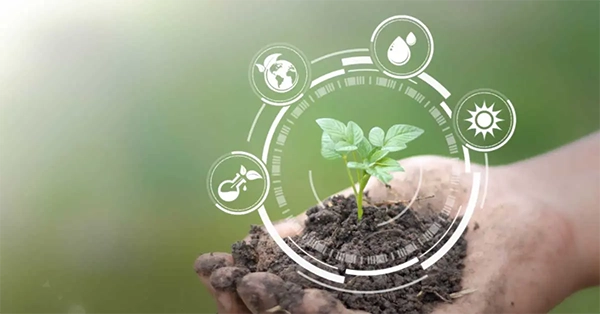The whole world is going through a pretty huge climate crisis right now. Weather events, climate change, and human activities have had a huge effect on the climate over the years.
And it was not until 55 years ago that environmental issues received any attention on a global scale.
Since then, we have had a ton of debates, negotiations, and agreements on how to save the integrity of the environment.
You know, according to a study done by the Lancet Commission, more than 9 million people die every year thanks to all the global pollution.
Yeah, that’s a serious number if you ask me…
But, if we want to move to a safer future, we need a way to fix all the damage we’ve done and keep track of it too.
The answer to this is pretty simple and most of us use this thing pretty often. Yes, We’re talking about IoT devices here.
In this blog post, we will learn what role IoT services play in helping with environmental monitoring.

IoT Environmental monitoring is basically when you use small internet-connected devices to keep track of all the things happening in nature.
This helps us understand how ecology and nature work and how our actions have affected the climate.
These tiny devices can be used to see if there are any issues with the environment.
DID YOU KNOW?
The global environmental monitoring market was valued at USD 20.4 billion in 2022. It is estimated to reach USD 38.14 billion by 2031, growing at a CAGR of 7.2% during the forecast period (2023–2031).
By linking sensors, devices and systems to gather and process amounts of data IoT solutions are revolutionizing monitoring. This interconnected network provides an insight into conditions that enable proactive and well informed actions.
But how is keeping an eye on the environment even helpful to us, you ask?
With IoT devices, you can get a visual and statistical feed of things like climate, weather, soil and that too in real-time.
This data can be a great tool that can help businesses and organizations make decisions to reduce their impact on the climate and spot any anomalies as they happen.
With hard data in their hands, businesses, and organizations can see the areas where they can reduce their impact on the environment and act on it.
Companies these days often need to comply with the latest environmental standards to make sure that they feel like they are all for protecting the environment.
People want to know that the product they are buying has the least impact on the environment.
By taking measures and going the extra mile, businesses can assure their customers that they are doing everything to provide their customers with green products.
This can help boost business growth too.
Environmental monitoring devices can come in a ton of different shapes and sizes and each one has its own use too.
Here are some of the most common types of environmental monitoring devices:
Soil, water, and atmosphere are the three basic components you need to keep an eye on if you want to monitor the environment.
IoT environmental monitoring systems used in many industries keep track of these three as the main focus.
For example, if you take a look at the farming sector, IoT systems are used to monitor things like crops, soil health, water quality, and the weather.
In cities, these devices can be used to monitor air pollution levels and traffic.

Disasters like earthquakes, storms, floods, and droughts kill approximately 40,000 to 50,000 people every year. This graph shows the average of deaths caused by natural disasters over the years.
We live in a time when protecting the environment is a very important topic of debate around the world.
IoT environmental monitoring systems are an awesome way to keep track of even the tiniest of changes in the environment.
These devices help us to gather different kinds of environmental data so that we can reduce our environmental impact.

Thanks for choosing to leave a comment. Please keep in mind that all comments are moderated according to our comment Policy.